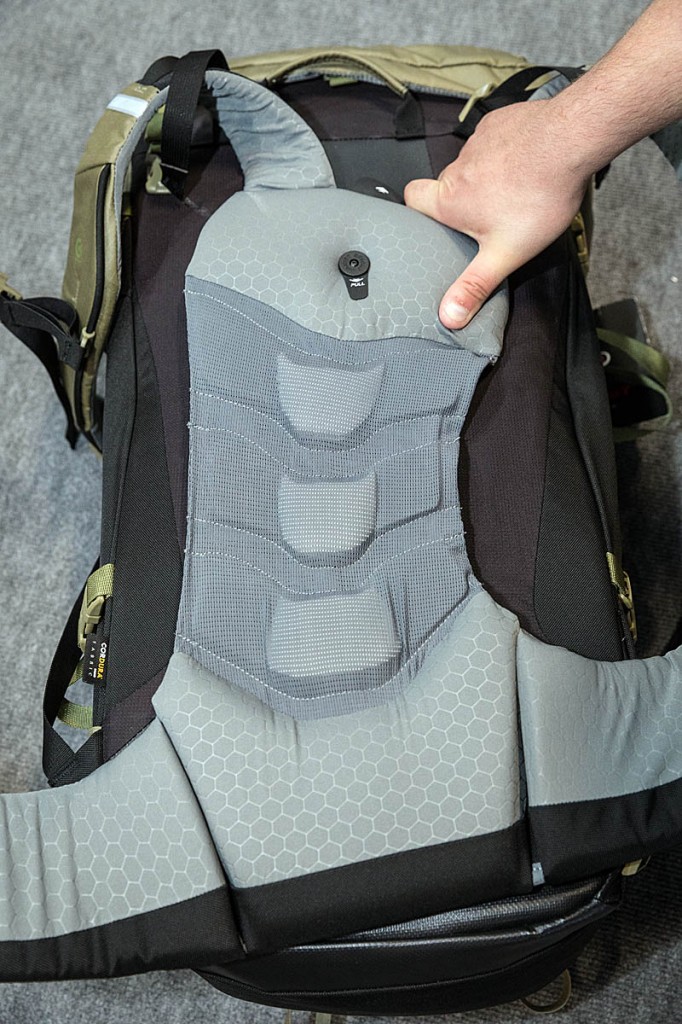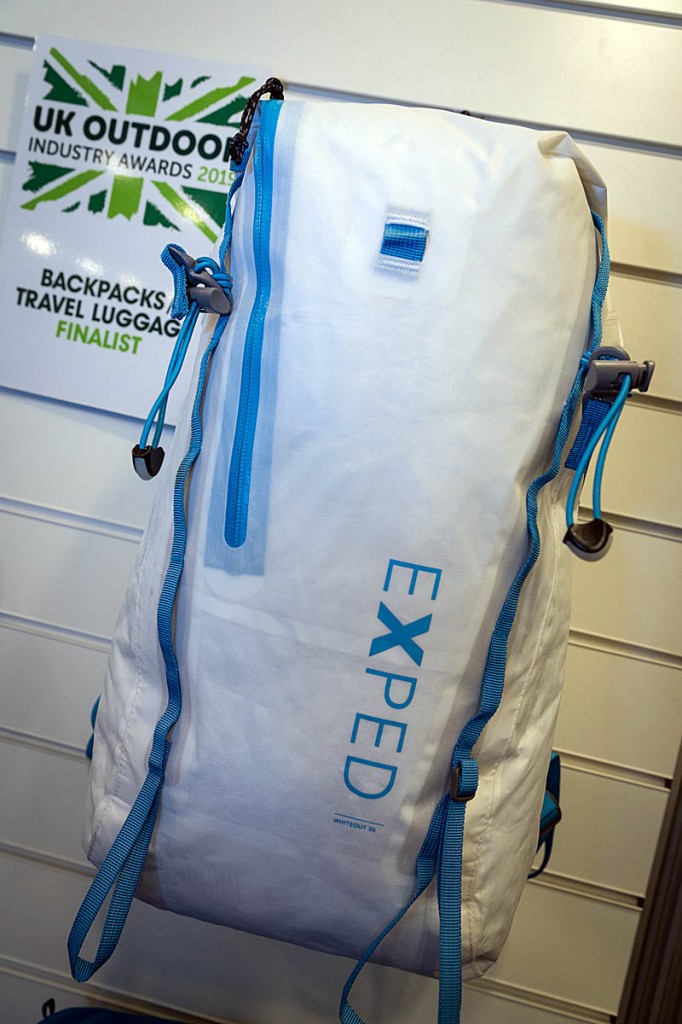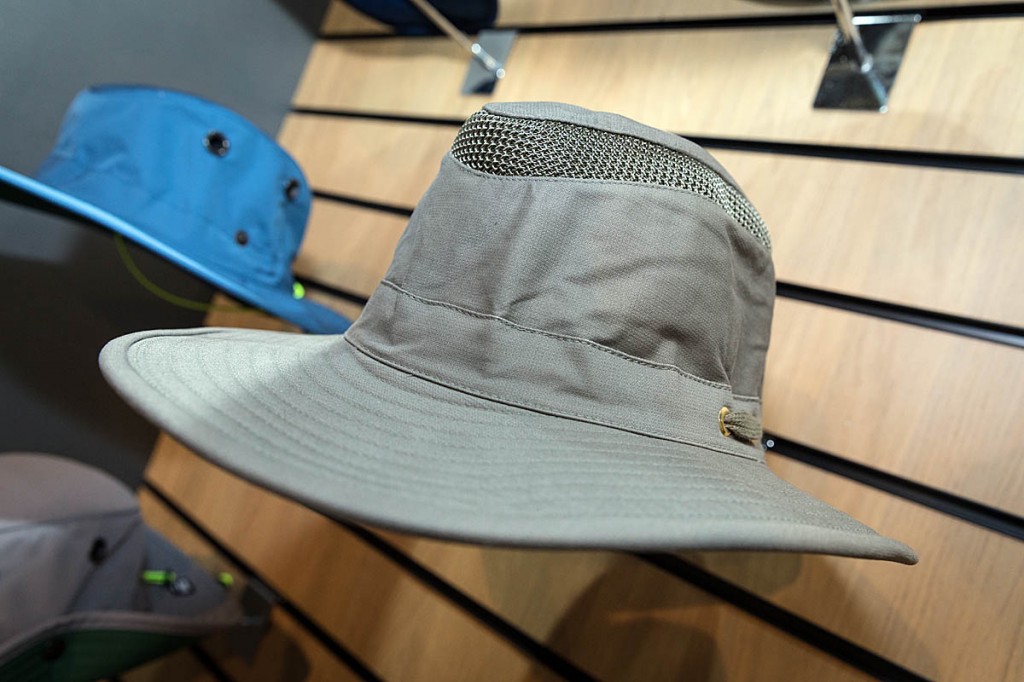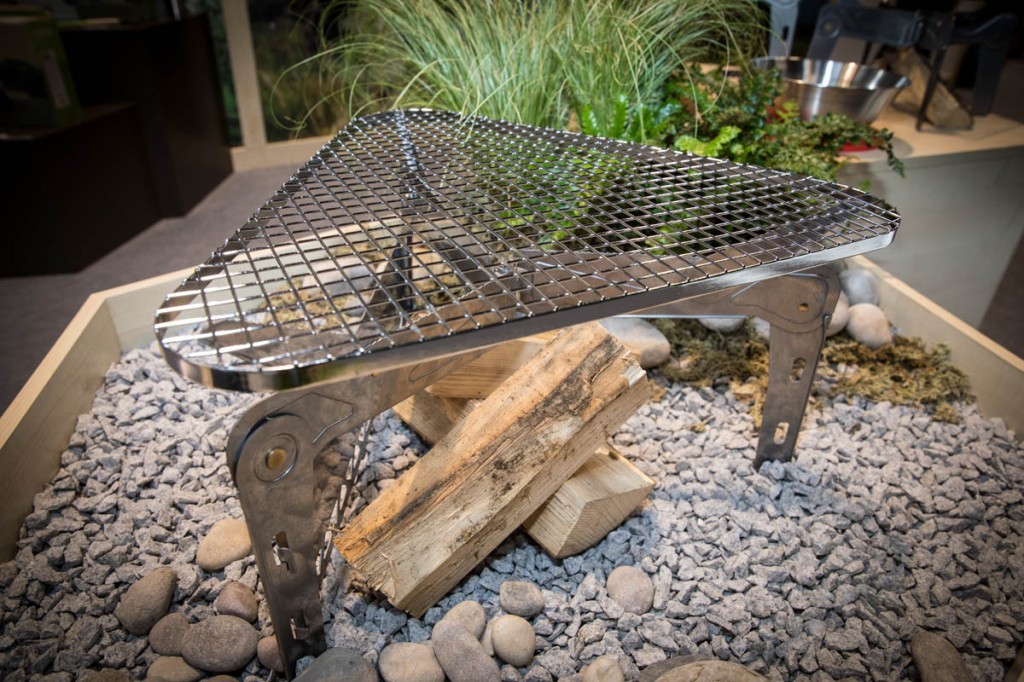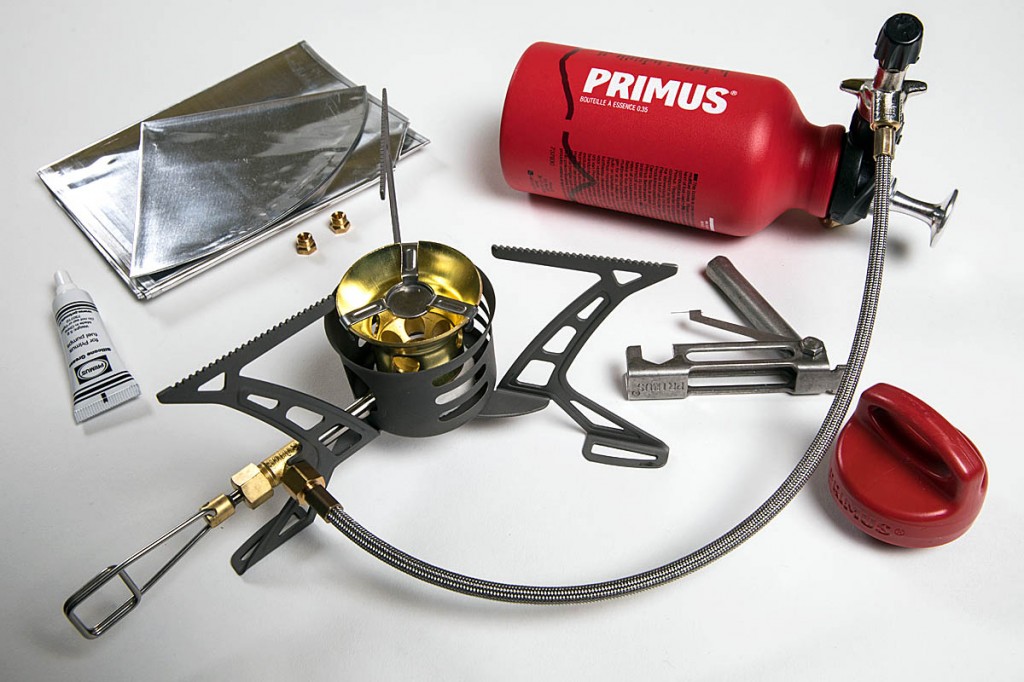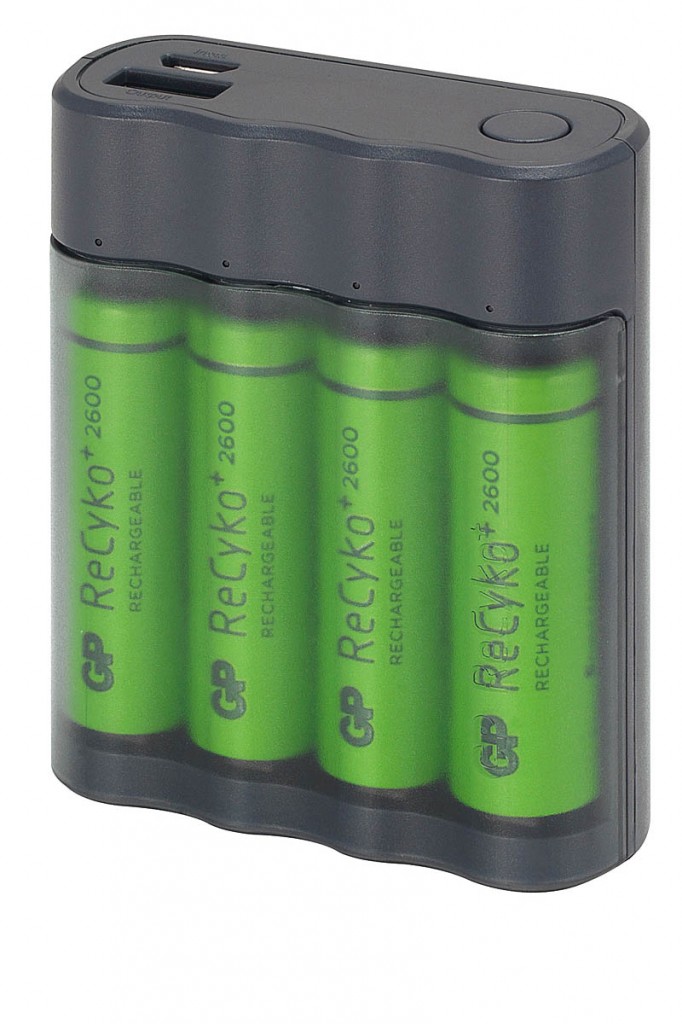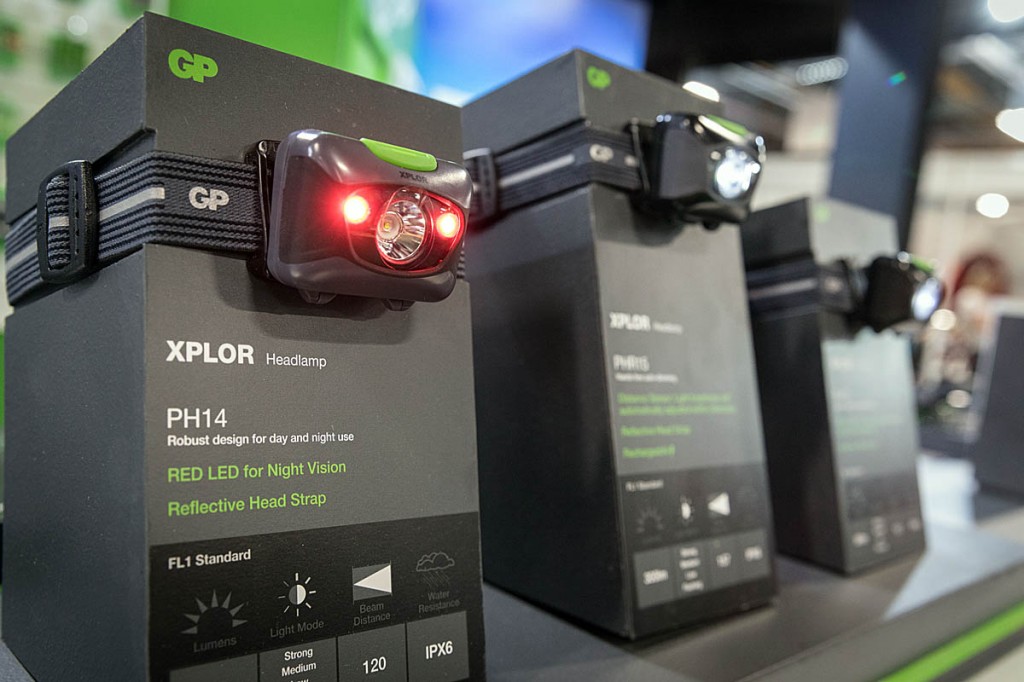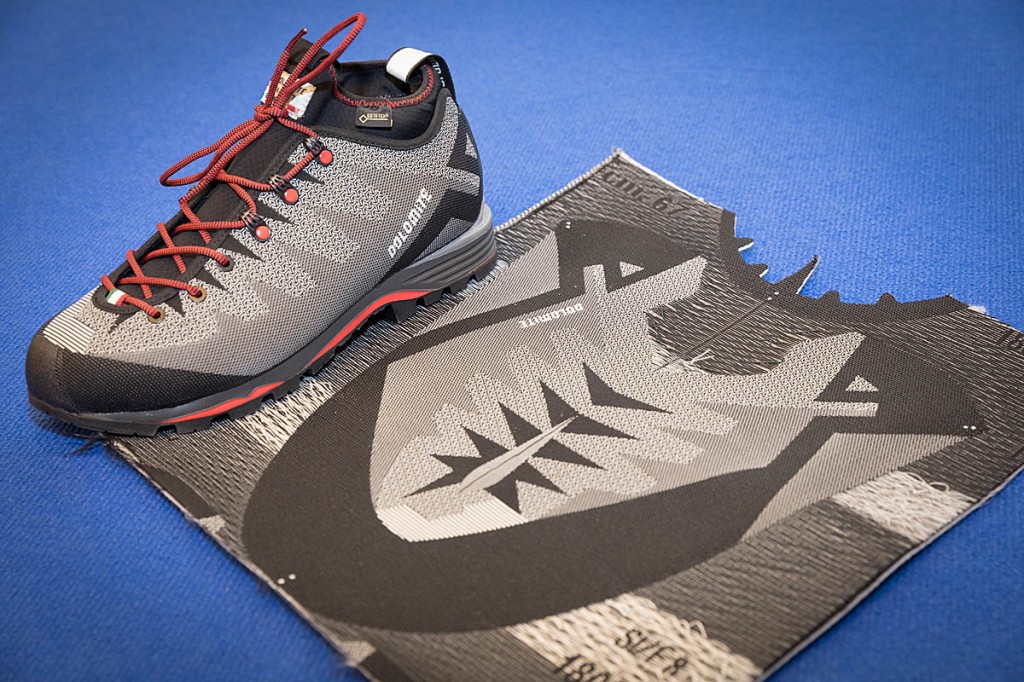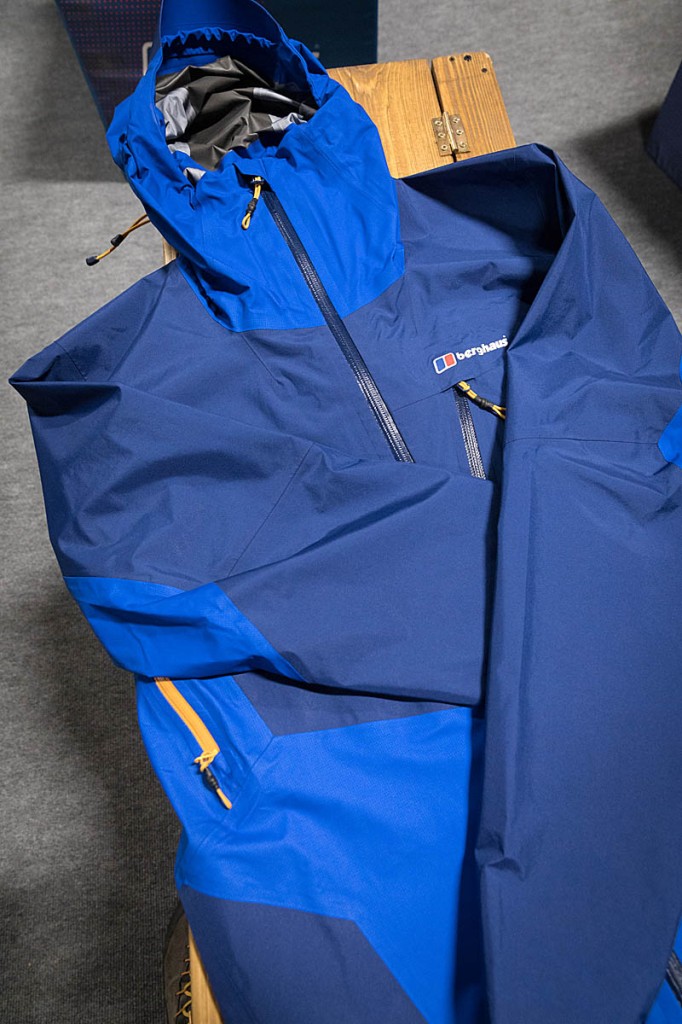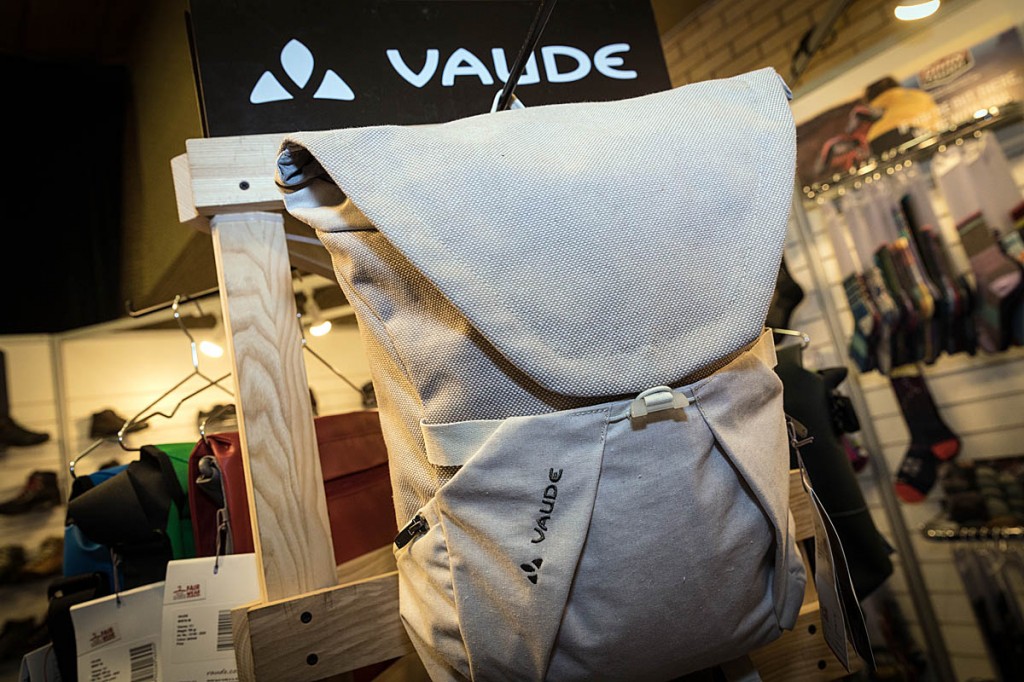
What's going to be landing in the stores next year? The Red Devils drop in to the Manchester show. Photo: Bob Smith/grough
How to predict what’s going to be in the outdoor shops next year?
When we dug out the grough crystal ball things were as hazy as Ben Nevis’s summit in November, so we decided to take the conventional route: go to the shows.
No, not the incongruously musical renditions of 19th century miserable French lives or striking Ford sewing machinists, but the glittering display of goodies that attract outdoor types like moths to a headtorch.
There is now one main UK outdoors industry show after some consolidation, plus a smaller one that has taken on a distinct climbing feel.
The Outdoor Trade Show was held for the first time in Manchester and the Kendal Outdoor Retail Show in Surbiton. Just joking; of course, it’s in the Cumbrian market town that was home to Alfred Wainwright for most of his life.
The trade shows are a chance for the brands, large and small, to showcase the items they hope will entice you to part with your hard-earned cash, or at least tap your PIN into the shops’ terminals. Retailers visit them to plan what to stock the following spring; journalists trot along to have the intricacies of new developments explained.
Some of them are run-of-the-mill; some are interesting; and some are a bit bonkers.
Here’s our first gaze into the near future. We’ll bring you more predictions once we’ve unwrapped the tarot cards.
Mammut men’s Trion and women’s Trea rucksacks will benefit from the brand’s Active Spine backs from next year. The back’s engineering is designed to mimic the articulation between shoulders and hips when walking. The top part of the back, carrying the harness straps, goes one way and the hipbelt in the opposite direction.
Mammut was also showing off its Flextron midsole system that uses a spring steel element to give extra stability on long hiking journeys. It is used in the Duncan range, with low, mid and high models, along with a 3d-knit version. Prices range from £139 to £229.
The Mammut Connect system will find its way into several items in the brand’s range. It’s an embedded passive near-field communication which, when scanned by a smartphone with NFC capability, will provide information on the item such as care and use information, as well as tips and videos. Users will also be able to provide feedback on the garment or item of equipment.
Swiss lightweight specialists Exped were showing off their Whiteout pack. Its unique fabric uses Dyneema with a 150 denier polyester laminate. Inside is a TPU coating and the seams are sewn and taped to complete the waterproof design.
It’s very much a minimalist pack aimed at serious mountaineers and guides. It comes in two capacities: 30 litres and 45 litres, both in two different back lengths. The 30l pack weighs 665g and 695g; its larger cousin tips the scales at 765g and 795g, but boasts toughness and durability.
The Whiteout comes in one colour: white, and has a roll-top closure. The back pad can be removed either to save extra weight or to use as a sit mat on the mountain.
All that technology doesn’t come cheap. The Exped Whiteout packs will retail at £245 and £280.
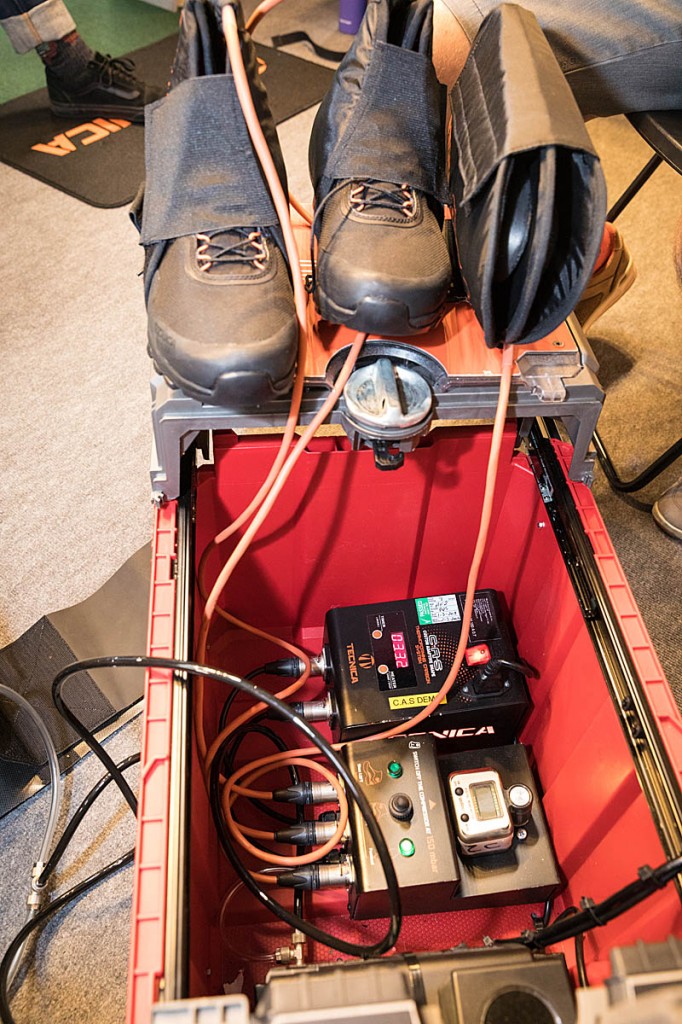
The Tecnica boots and footbeds are warmed before being moulded to the troll-like grough feet. Photo: Bob Smith/grough
Over on the Tecnica stand, it looked like a mechanic had left his gear lying around, with a big red tool box gracing the area, an assortment of wires and tubes spewing from its electronic innards.
What I was looking at was actually the Italian company’s CAS footwear kit, which it says is the world’s first in-store customisable boot moulder. Little did I know I would be held captive for 20 minutes while a pair of shoes was shaped to my individual idiosyncrasies.
The footbeds are treated in a heated blanket first and then placed into what look like giant inflatable bootees. In go the feet and up goes the pressure. A timer ensures the correct time is spent to get the right fit and, just for good measure, your knees are strapped together to ensure there’s no running off.
Next comes the shoe, which is also heated and again moulded in the big bootees to customise the heel and upper, in particular the area from the forefoot backwards, to the individual foot.
The system works on both the Forge boot and the Plasma shoe, which will be introduced in 2019. The footwear is based on an anatomical last too, and with features such as an overlap design replacing a conventional tongue, and Kevlar boot hooks and contoured laces, it should guarantee a comfortable and personal fit.
The equipment is installed in six UK stores and the boots come in leather and synthetic upper versions, selling from next year for £240. The Plasma shoe will be available from spring 2019, priced at £180 for the Gore-Tex version and £150 for the non-membrane shoe.
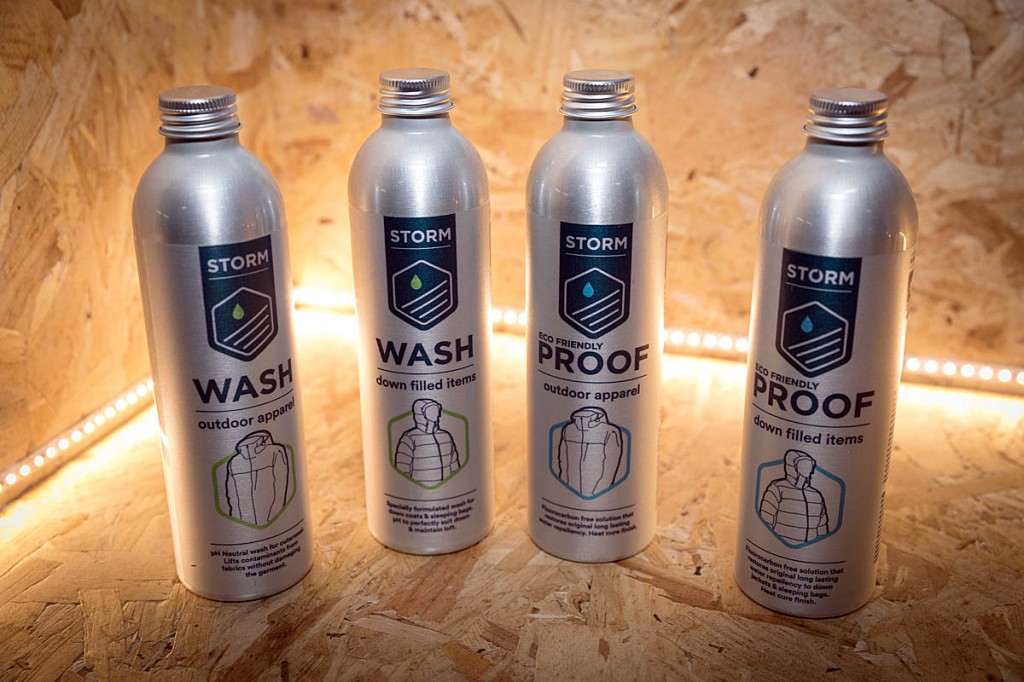
Storm shows its mettle: some products will be packaged in aluminium bottles rather than plastic. Photo: Bob Smith/grough
Plastics are big news at the moment, and bad news for the world’s oceans. Wash and proofing solutions brand Storm is starting to package its core products in aluminium rather than plastics. It said there’s a much bigger take-up of recycling of aluminium so the packaging is viewed as more eco-friendly.
There’s been a reduction in the size of the packages too: from 300ml to 225ml, but Storm assured us this wasn’t a sneaky bit of shrinkflation: the solutions are more concentrated in the new packs, and will still be good for three washes.
Storm still produces some products that contain PFCs, the other bête noire for the environment, because certain markets, the military for instance, demand this, but all its green-branded washing solutions are free of these chemicals and the blue packaged Eco versions of proofer are also PFC-free. These currently need heat curing to activate the waterproofing properly, but the brand is working on an air-curing version that will work in a similar way to the non-Eco proofer.
Storm is also introducing a water-based silicone tent proofer which also has added UV protection. It will come in a trigger bottle to make it easier to apply to small tents, and will retail for £10.
While there was nothing astonishingly new on the Tilley stand, it’s fair to say the exceptional UK summer has been kind to the hat manufacturer.
All its products are hand made in Canada and of particular interest to outdoor enthusiasts are those featuring the Airflo system, which has polyester built into the crown of the hat to allow hot air to escape and cooler air to flow through.
The Hiker’s Hat, which retails at £80, is one such model, and it also uses the Hyperkewl insert, a pad containing absorbent crystals that, when wetted first, and then inserted into the top of the hat, provide about 20 per cent extra cooling.
The T5MO is made from organic cotton and offers sun protection of UPF 50+. It also features the Airflo system.
All Tilley hats have a water-repellent finish and carry a lifetime guarantee against natural wear and tear.
Primus’s Aeril open fire grills are probably something you’ll want to wait to use until after the wildfire risk diminishes significantly. There are two sizes, both with fold-out stainless steel legs to support the grill grate for use over an open fire.
The whole caboodle folds flat for transport. Respective prices for the large and small versions are £120 and £85.
And, on the subject of starting your stove or fire, Primus also has a new fire steel. I’m a big fan of ignition steels as they work in the wet and cold. An interesting fact from Primus is that the spark its new Ignition Steel produces has a temperature of 3,000C.
The steels come in two sizes, both with lanyards, priced at £17.50 and £12.
We had a long chat with one of Primus’s technical staff about the brand’s OmniFuel II stove. As the name suggests, it will work with kerosene and diesel; petrol and ‘white gas’; and LPG gas such as butane and propane.
The stove’s versatility makes it a good choice for travellers heading for remote regions where it may be difficult to find your usual sources of fuel. The stove comes with three different sized jets, which are changeable by the user. The jets are precision drilled at Primus’s Estonia factory with diameters as small as 0.28mm.
The liquid fuel bottle’s pump is slightly angled so it only works when placed on the correct side. Because liquid fuel needs to be heated first before it will burn efficiently with a nice blue flame. A little fuel is released into the burner bowl and its priming pad after pumping the bottle 15 to 30 times. The fuel – petrol, white gas, kerosene or diesel, is burnt for 30 seconds before the bottle valve is opened to allow full burning.
The Primus OmniFuel II, complete with fuel bottle, costs £190.
There’s also a lightweight multifuel stove, the Omnilite Ti, which is smaller and uses titanium in the legs and stove body for strength and weight saving. Price, including fuel bottle and pouch, is £225.
Of course, the easy option with both the above stoves is to use butane-propane gas, in which case you simply connect up the canister and light the stove normally, with no priming necessary.
The need to recharge gadgets while in the great outdoors is a fact of modern life, so we’re always interested to see developments in this area. GP Batteries had an interesting new item: the Charge AnyWay.
This is a battery charger that can also act as a power bank. Put your rechargeable batteries, either AA of AAA in it, and plug it into a USB power outlet, and the batteries will be put on charge. Conversely, you can use the batteries, once charged as a power bank on the move, with which to charge your mobile phone or other small device. You can also put non-rechargeable batteries in it to use as a one-off power bank. The GP Batteries Charge AnyWay costs £20.
The brand is also introducing a new range of lithium powerbanks, the M-Series, which come in three capacities: 5,000mAh; 10,000mAh; and 15,000mAh, the higher two of which feature USB-C charging ports. The format is found on some of the most recent smartphones and laptops. Conventional USB ports are also included.
GP said the 10,000mAh model will provide up to four recharges of a phone. The 15,000mAh version will charge a laptop via the USB-C port and also has a standard USB port. The two larger models can also be charged while they’re charging another device. Three things can be simultaneously charged.
The USB-C port also allows the user to programme the powerbank to tweak settings.
Input via the USB-C port is 3A and 2A into the micro-USB port; outputs are 3A and
2.4A respectively.
Prices for the 5,000mAh, 10,00mAh and 15mAh models are £19.99, £29.99 and £34.99 respectively.
GP is also entering the headtorch market with a range to complement its hand-held torches. The Xplor collection has one rechargeable torch and two that use non-rechargeable power.
The PHR15 delivers 300 lumen of brightness, with motion- and distance-sensor to provide auto-dimming, IPX6 water resistance, up to 160m beam length and a safety lock. The headband has a reflective strip and the torch has a red LED SOS function.
Retail price is £35.
Dolomite’s Veloce GTX boot has uppers woven in a single piece on looms in Italy and shaped on to a crampon-compatible sole.
The Veloce is a lightweight mid-height boot with a stiffened sole and lightweight construction designed with alpinists in mind, giving the versatility of an approach shoe and a boot for moderate climbs, while allowing crampon use if crossing snow- or icefields. Dolomite said the Veloce GTX sill cope with grassy, stony, rocky and snowy terrain.
A pair tips the scales at a little under 600g. The boot uses Perspair in its uppers, combining technical yarns in different areas providing specific properties of anti-shearing, breathability and anti-abrasion.
The sole unit uses Vibram Nanga Lite Base tread and the boots have a Gore-Tex membrane to provide waterproofing.
The Dolomite Veloce GTX will sell for £215 a pair.
Berghaus’s Changtse Jacket incorporates three different Gore-Tex fabrics. The lightweight technical garment is designed with alpinists in mind and is bluesign approved.
The Changtse uses Gore-Tex Active in the core area of the body, with Gore-Tex Paclite in areas subject to abrasion. Gore-Tex Topo Stretch fabric completes the trinity around the cuffs and hem, for stretch and comfort.
There’s a Vapour Storm vent at the back of the jacket to provide ventilation on those strenuous sections of the route and the jacket has a helmet compatible hood.
Women’s size 12 weighs 284g while the men’s medium version is 375g. The Changtse will sell for £290 and there are is a Changtse Pant at £190 to complete the outfit.
Vaude explained it’s at the forefront of sustainability in Europe. It gained the European Business Award last year for environmental and corporate sustainability.
It says growth and success can be achieved while also being a socially and environmentally responsible business.
Its Ecopaxx material, used in some of Vaude’s clothing, is derived from castor oil plants rather than the normal hydrocarbons and is just one of a surprising range of sustainable raw materials that find their way into its gear and clothing. These include recycled coffee grounds and even unused raw milk surplus to food production.
Its Green Shape Core Collection is being expanded. Some of its hardshell waterproof jackets use the Ceplex Green membrane, which is free of the usual PTFE and replaces oil-based polyurethane with a minimum of 25 per cent recycled or renewable raw materials.
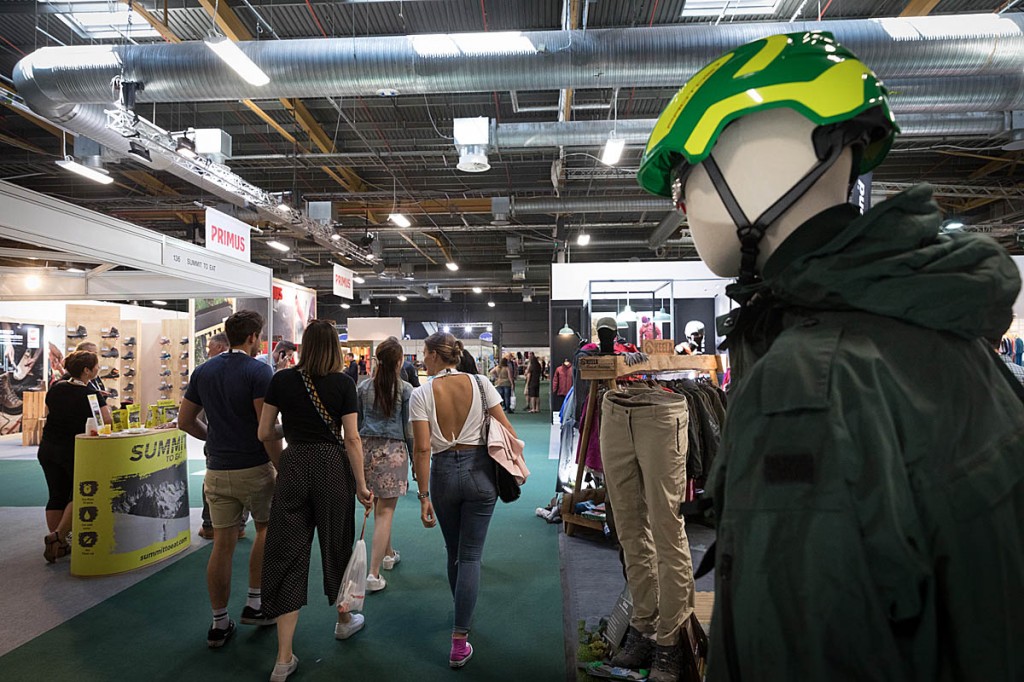
The shows give a view of what's going to be in the shops the following year. Photo: Bob Smith/grough
On display at KORS was the Hazel pack from the Lignum lifestyle range. It features 70 per cent recycled hemp in its main fabric, with 30 per cent organic cotton in the rest. The plastic buckles on the pack are made from a material with 62 per cent castor oil-derived content.
The Hazel has a compartment for a 13-inch laptop, a padded back and height-adjustable lid. It will sell for £115.
More glimpses into the outdoor world of 2019 will follow once we’ve tuned in the crystal ball properly.
